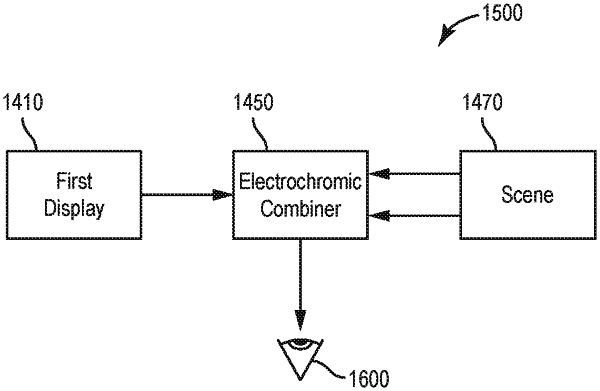| CPC G02F 1/163 (2013.01) [G02F 1/13318 (2013.01); G02F 1/133602 (2013.01)] | 18 Claims |

|
1. An optical display system comprising:
a first display;
an electrochromic layer including one or more electrochromic regions separated from each other;
a combiner arranged to combine an image from a scene and an image from the first display to provide a combined image, wherein the combiner is separated from the first display and the electrochromic layer is disposed between the scene and the combiner;
one or more electronic drivers arranged to electrically connect with and drive respective of the electrochromic regions;
and
a controller configured to control the one or more electronic drivers to individually address each of the plurality of one or more electrochromic regions to selectively drive by applying a potential difference to one or more selectively driven electrochromic regions of the one or more electrochromic regions to change light transmission of the one or more selectively driven electrochromic regions,
wherein the electrochromic layer is associated with a first index of refraction, and the combiner comprises:
a high light transmissive side oriented to the scene;
a high reflectivity side oriented to the first display, wherein the high reflectivity is caused by a coating for the electrochromic layer, the coating associated with a second index of refraction different than the first index of refraction;
and
an index matching material.
|